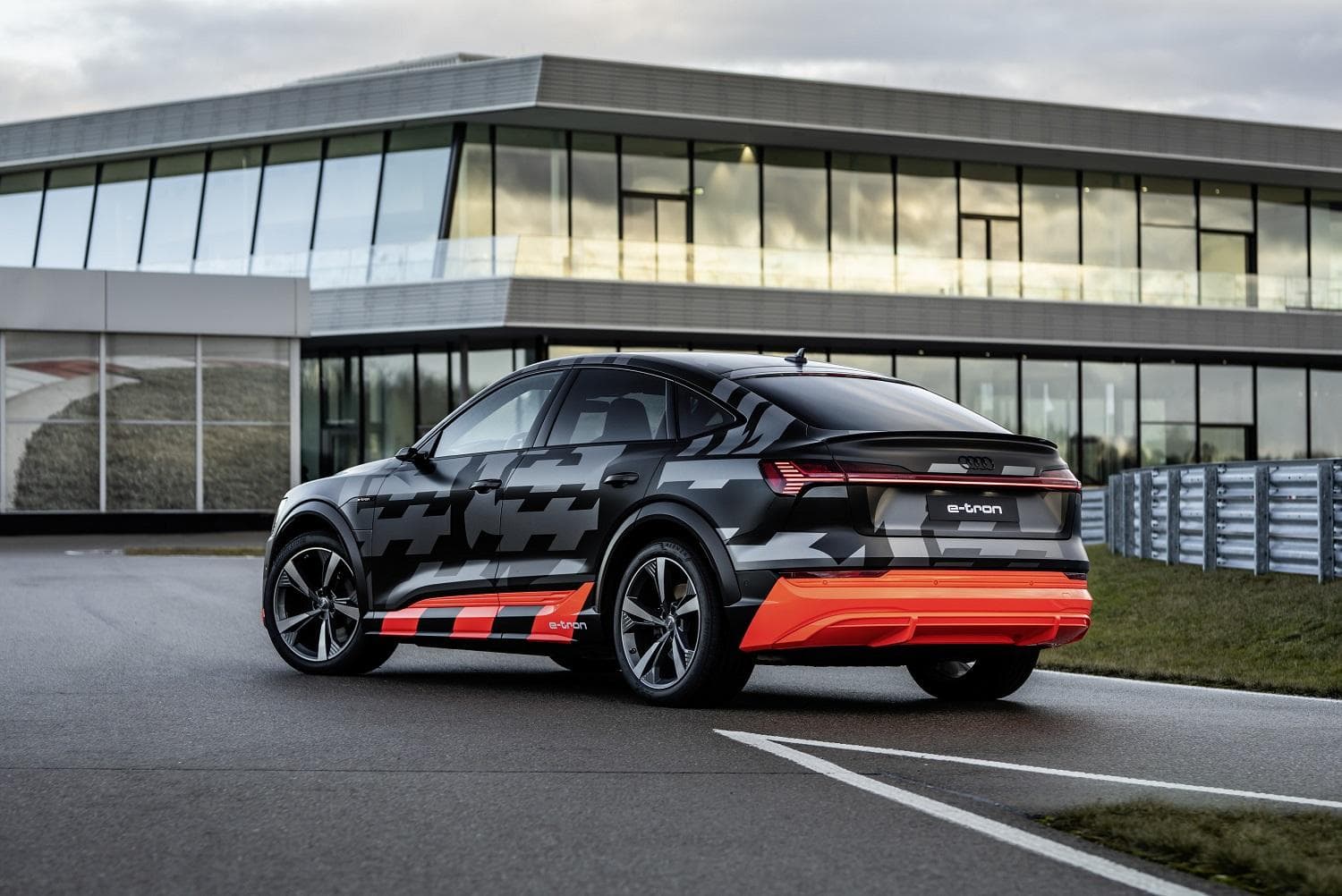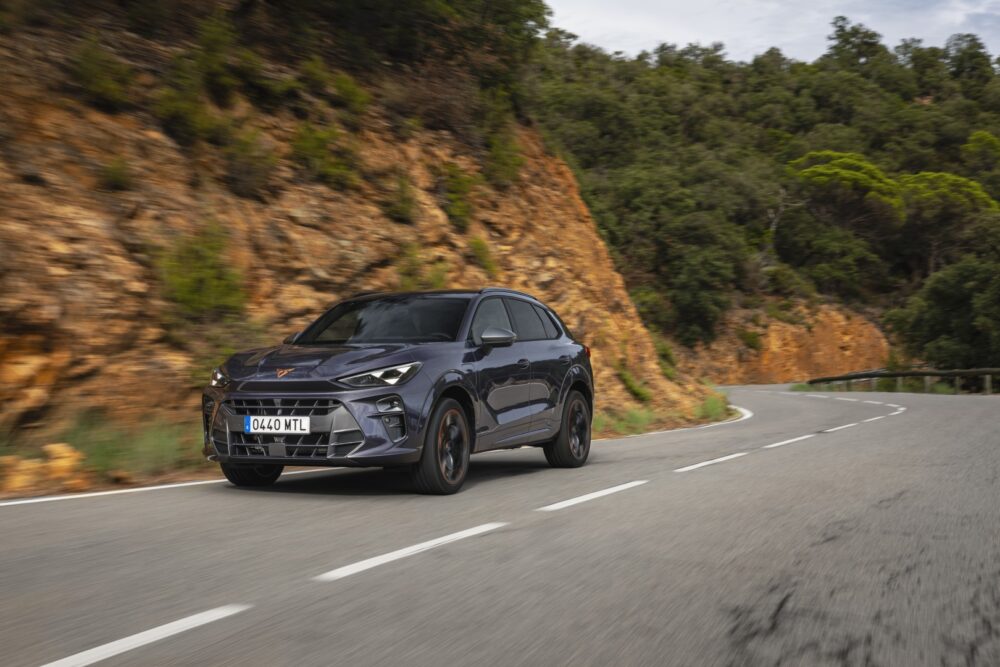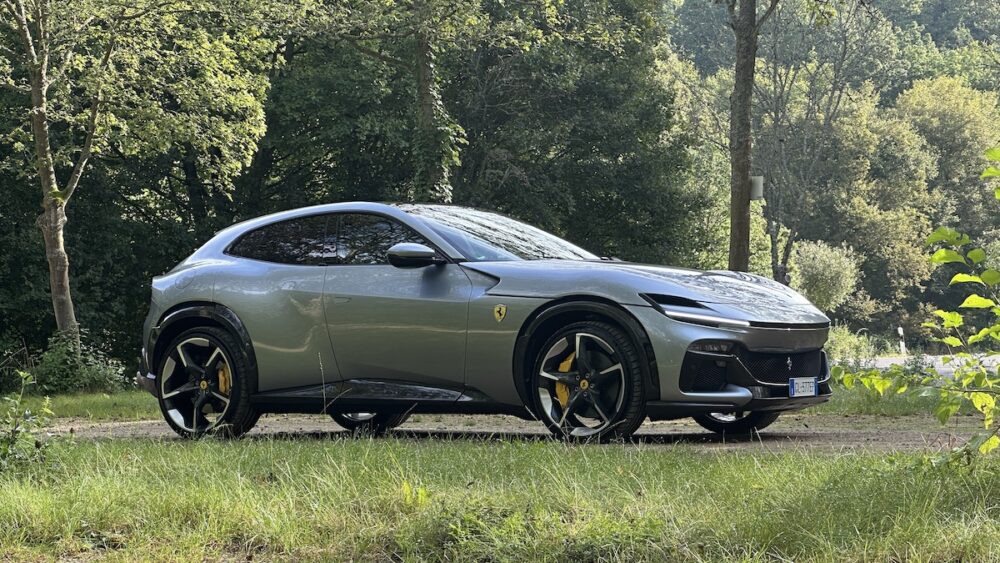Audi: The quattro celebrates Happy Birthday 🎥
Jubilee Anyone who says quattro means Audi - and anyone who says Audi very often means quattro: The principle of four driven wheels has been a mainstay of the brand - for 40 years. And with great success. Mattias Ekström with an Audi e-tron quattro on the infamous "Streif" ski race track. Since the debut of the Ur-quattro on [...]
Mattias Ekström with an Audi e-tron quattro on the infamous "Streif" ski race track.
Since the debut of the original quattro at the 1980 Geneva Motor Show, Audi has produced around 10.5 million cars with the proven quattro drive. Now comes the next chapter in the success story: The Audi e-tron S and Audi e-tron S Sportback prototypes celebrate the premiere of electric torque vectoring.
Models successful for years
The balance sheet from 40 years of quattro is impressive. By the end of 2019, Audi had produced 10,448,406 cars with all-wheel drive, with 804,224 units in 2019 alone.
In 2019, just under 45 percent of all Audi models produced were with quattro drive - most of which came from the plants in Changchun (China) and San José Chiapa (Mexico). A total of 258,765 new cars with the familiar all-wheel drive technology were produced in Ingolstadt and Neckarsulm in 2019.
Supporting pillar of the Four Rings
The quattro drive is a mainstay of the brand with the four rings. Apart from the compact A1, it is present in every model series. All large and particularly powerful models, as well as all S and RS models, transmit their power to the road via four wheels as standard.
Technology with three electric motors
The four rings present the next expansion stage of electric all-wheel drive: In the Audi e-tron S and e-tron S Sportback prototypes, quattro is supplemented with electric torque vectoring.
Electric torque vectoring - the shifting of forces between the wheels - takes just milliseconds. What's more, it can set extremely high torques that allow the car to turn into corners as dynamically as a sports car.
Audi is the first manufacturer in the premium segment to mass-produce the technology with three e-motors.

Milestone in automotive engineering
When the Audi quattro debuted in Geneva in 1980, it presented a power transmission that was completely new for passenger cars - an all-wheel drive system that was light, compact, efficient and free of distortion.
This made the quattro principle particularly suitable for sporty vehicles and high-volume production, right from the start.
The 200 hp Ur-quattro remained in the range as a production model until 1991, with several technical modifications. In 1984, Audi introduced the exclusive Sport quattro with an output of 306 hp. In 1986, the manually lockable center differential with which the original quattro had started gave way to the Torsen differential, which could distribute the drive torque variably.
Diesel with permanent all-wheel drive
In the years that followed, the brand continued to fan out quattro technology. In 1995, the first Audi TDI with permanent all-wheel drive appeared, and in 1999 the technology moved into the A3 and TT model series and thus into the compact segment. The next major step was taken in 2005 with the center differential with asymmetrical dynamic basic distribution. A viscous coupling on the front axle debuted in the Audi R8 in 2007, followed the next year by the sport differential. In 2016, the quattro with ultra technology completed the portfolio.
The quattro's triumphant advance in motorsport
At the beginning of 1981, Audi entered the World Rally Championship and the quattro drive dominated the field as early as the following year. In 1982, Audi won the manufacturers' championship, and in 1983 the Finn Hannu Mikkola took the drivers' title. At the end of the 1984 season, both titles were up for grabs, with Stig Blomqvist (Sweden) becoming World Champion.
In that year, Audi used the shortened Sport quattro for the first time, followed in 1985 by the Sport quattro S1 with 476 hp output. In 1987, Walter Röhrl won the hill climb at Pikes Peak in the USA with a specially modified S1 - a strong conclusion to the wild rally years.
Successes in touring car racing
In 1988, the brand secured the manufacturers' and drivers' titles at the first attempt with the Audi 200 in the American TransAm series, and the following year the four rings successfully competed with the GTO in the IMSA series.
In 1990/91, Audi entered the V8 quattro in the German Touring Car Championship (DTM), winning two drivers' championships. In 1996, the A4 quattro competed as a super touring car in seven national championships, winning them all. Two years later, European regulators largely banned all-wheel drive from touring car racing.

R18 e tron quattro with hybrid drive
In 2012, an all-wheel drive race car from Audi again competed on the circuit - the Audi R18 e-tron quattro with hybrid drive. A V6 TDI drove the rear wheels, a flywheel mass accumulator supplied two electric machines on the front axle with recuperated energy - when accelerating, the race car used a temporary quattro drive.
His record was impressive: three overall victories in the Le Mans 24 Hours and two drivers' and two manufacturers' titles each in the World Endurance Championship.
Commercials and spectacular action
In 1986, professional rally driver Harald Demuth drove an Audi 100 CS quattro up the ski jump in Kaipola, Finland. In 2019, circuit and rallycross champion Mattias Ekström (Sweden) achieved a similar feat: On the notorious "Streif" ski circuit near Kitzbühel, he mastered the steepest uphill section with a gradient of up to 85 percent in an Audi e-tron quattro with three e-machines.









